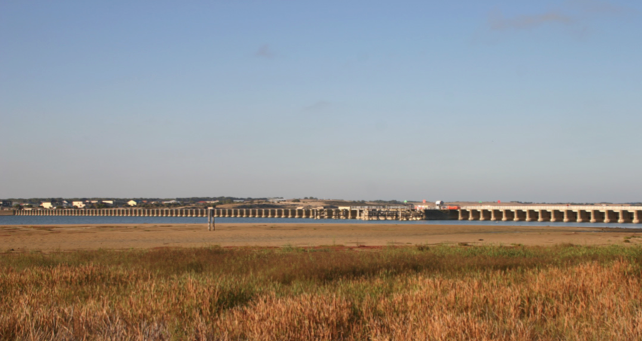THE key plank of the national water reform agenda in Australia, the Murray Darling Basin Plan, was presented to the Australian Parliament on 22nd November 2012, and was passed with the support of the Coalition on 29th November. There was a dis-allowance motion, but that expired earlier this week. The same day, Tuesday 19th March 2013, Federal Water Minister Tony Burke was reported crowing that the implementation of the plan is now “irreversible” and that the Basin will now benefit from “an extra 3,200 billion litres of water a year”.[1]
What nonsense. There is no extra water. There will simply be a redistribution of water to the Lower Lakes. That is what the plan is in essence all about, more water for South Australia and in particular a massive artificial lake system that has been in ecological decline since the building of 7.6 kilometres of sea dyke in the 1930s. [2]

Public statements from The Minister have made much of the need for the “extra” water to keep the mouth of the Murray open [1]. But this is also a lie.
Along the NSW and Queensland coastlines local governments recognise that river mouths must be constantly dredged to maintain safe passage for boats and to avoid flooding of communities in the lower reaches. This was particularly the case recently following ex-cyclone Oswald with the associated storm surges throwing up sand that blocked river mouths.
But when it comes to the Murray’s mouth, rather than the local Lake Alexandrina council paying for some dredging, the federal Water Minister promises thousands of gigalitres of freshwater from upstream to scour the mouth!
Mr Burke repeatedly justifies the new Basin Plan with the explanation that by taking 2,750 gigalitres of water from food producers and sending it down to the Lower Lakes the Murray’s Mouth will be kept open 90 percent of the time [3].
We surely are a rich country if we can afford to spend between $3.4 and $5.5 billion in freshwater, water that could otherwise be used to grow food, to keep this narrow and shallow channel open to the Southern Ocean.
But the story as repeated by Mr Burke is actually even more bizarre because the sea dykes that the Minister never mentions, block the flow of freshwater to the mouth.
The sea dykes have also limited the potential for scouring of the Murray’s Mouth by the tides of the Southern Ocean.
Indeed back in 1856, South Australia’s Surveyor General George Woodroffe Goyder recognised the potential of the Mundoo channel to scour the Murray’s Mouth. He suggested the natural process of deepening and widening the Murray’s sea mouth be enhanced by cutting through the rock bar across this channel thus further concentrating tidal water inflow and river water outflow. The rock bar is of calcareous sandstone and a relic of sea level rise about 125,000 years ago. Instead over the last 156 years government policy has worked to stop the tide and block the channel.
***
[1] Watershed moment for our mighty River Murray as Murray Darling Basin plan becomes fixed. March 19, 2013. By David Jean and Tim Dornin http://www.adelaidenow.com.au/news/south-australia/watershed-moment-for-our-mighty-river-murray-as-murray-darling-basin-plan-becomes-fixed/story-e6frea83-1226600145482
[2] There are five sea dykes, known locally as barrages, and their impact on the lower Murray is explained at the Lakes Need Water website http://www.lakesneedwater.org/the-case-for-an-estuary
[3] Draft Murray Plan: Tony Burke, Radio National, Breakfast, April 12, 2012 http://www.abc.net.au/radionational/programs/breakfast/draft-murray-plan-tony-burke/3945288
For a more detailed overview of the situation read ‘Save the Murray: Restore the Estuary’ available for download here: https://jennifermarohasy.com.dev.internet-thinking.com.au/wp-content/uploads/2012/03/Murray-Estuary_Sydney-Institute-Paper-2.pdf

 Jennifer Marohasy BSc PhD has worked in industry and government. She is currently researching a novel technique for long-range weather forecasting funded by the B. Macfie Family Foundation.
Jennifer Marohasy BSc PhD has worked in industry and government. She is currently researching a novel technique for long-range weather forecasting funded by the B. Macfie Family Foundation.